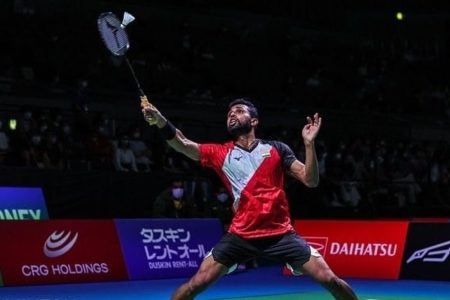HS Prannoy winning the men’s singles at the $420,000 Malaysia Masters – his first individual title in six years – on Sunday made him the 10th different champion in as many BWF World Tour tournaments this year.
This is the first time since the Super Series (2007-2017) and World Tour (2018 onward) system was implemented by the Badminton World Federation (BWF) that we are seeing such diversity. Of the 10, only two were top seeds, only four were seeded and two of the six unseeded shuttlers were promoted from the qualifying list after withdrawals.
Former England player Gillian Clark, now a respected commentator, points out that the longest run of different winners across all five categories post 2007 was in 2015 when 12 different women’s doubles pairs won. This is in contrast to the recent past when greats like Lin Dan, Lee Chong Wei and Chen Long dominated.
Lee Chong Wei and Chen Long together won 10 of the 13 Super Series in 2013. In those years the ‘Big 3’ won most of the tournaments. In the World Championships, Lin Dan and Chen Long together won seven of the eight events played between 2006 and 2015. Lee Chong Wei reached four finals.
The scenario has changed completely.
“Men’s singles is totally open. Anybody in the top 30-35 can win. The differences are minimal. Lin Dan, Chen Long and Lee Chong Wei were a good 35-40% better than the next seeded player,” said Prannoy, who won his first BWF World Tour title on Sunday.
Japan’s Kento Momota had a dominant run in 2018 and 2019 and Dane Viktor Axelsen enjoyed such success in 2022. But there is unlikely to be the kind of supremacy the era of the Big 3 saw.
There are multiple reasons. One is the number of tournaments a player must play. Today a top 15 singles player or a top 10 doubles pair is required to play all four Super 1000, all six Super 750 and two out of eight Super 500 events – a total of 12 mandatory tournaments. If they don’t, they will be fined $5,000. With 2023-24 being the Olympic qualification period, players will aim to play even more tournaments to earn ranking points to make the cut for Paris 2024.
“It is changing. A lot of youngsters are coming into the frame. You can see that in the top 15. It becomes really tough, especially the Super 1000s and 750s,” Prannoy, the world No. 8 said from Hyderabad.
Physicality aspect
Badminton has changed a lot in the last 10-15 years. The physicality in the game has increased tremendously. “With sports science coming into play in the last 10-12 years everybody has been able to gain that advantage. Earlier, only a few like them (Big 3) could crack the code of how to remain on top. Sports science has really helped everybody get upgraded,” the Thomas Cup champion said.
“The margin of physicality has reduced (between players) as everyone is able to train in a similar way, contain their injuries with the concept of weight training changing completely. Probably that is the reason why we don’t see a big difference in physicality of play among the top 10; it is also why they can play much longer (matches).”
A change in conditions and shuttles have also played an important role with some adapting better than the others. The quality of shuttles has really improved; the new generation of shuttles rarely break.
“The technology is so advanced that the shuttles only get ruffled but don’t break, which makes them slower. We used to have faster shuttles back in 2015-17. The differences in conditions also make an impact. Malaysia had never been this slow in the last 10 years. It was always drifty and very tough, but never slow. This time it was so slow.
“Then like Japan, we would always play in big stadiums that made the shuttle travel a touch slow. Shuttles now are generally on the slower side which can make matches longer, bringing in the physicality aspect,” concluded Prannoy, who next plays in the Singapore Open next week.

